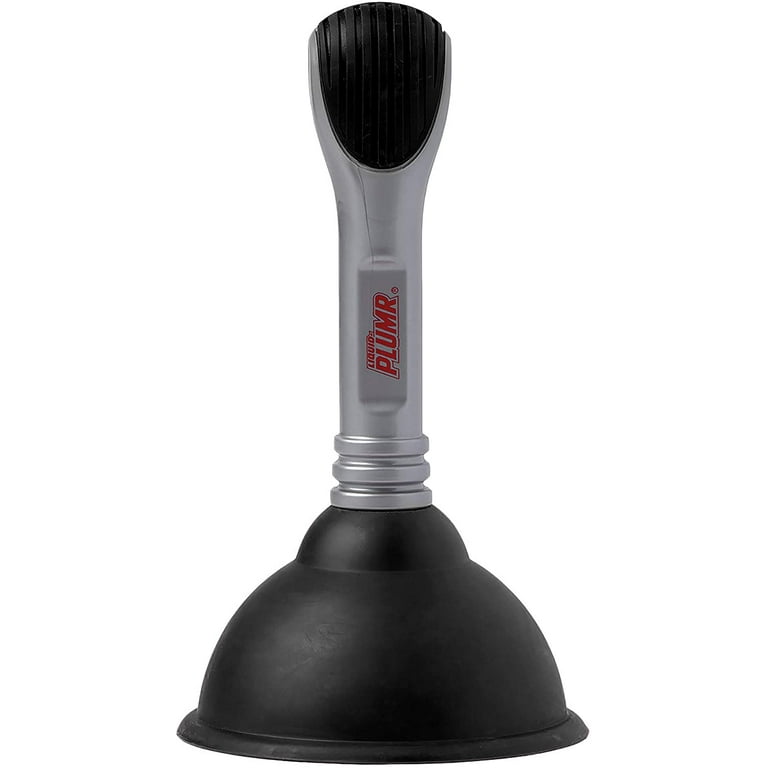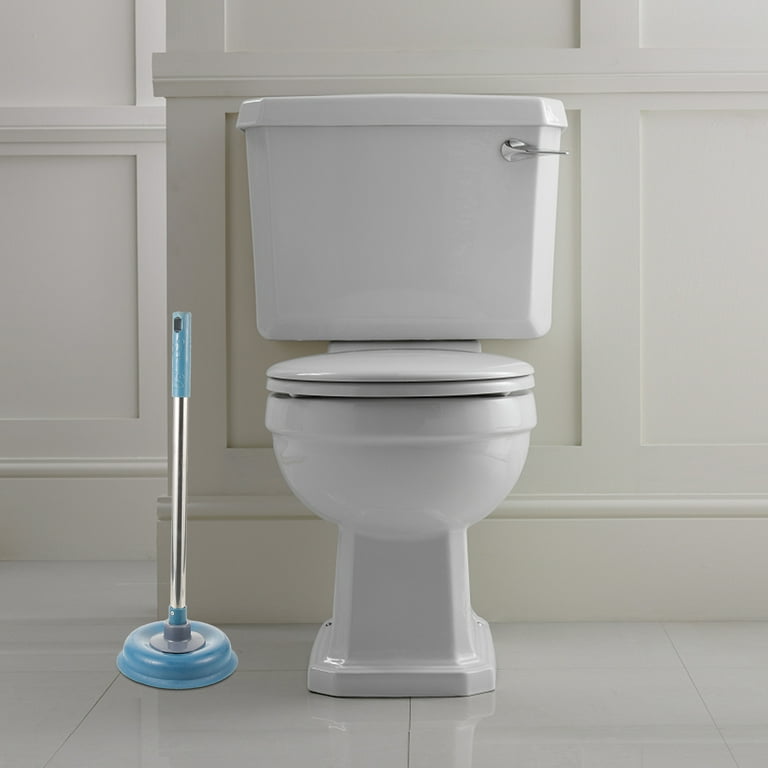Applying Plungers and Drain Cleaners: Effective Strategies
Applying Plungers and Drain Cleaners: Effective Strategies
Blog Article
We have come across the article involving How to Unclog Your Sink with a Plunger down the page on the web and felt it made perfect sense to write about it with you on this site.

Intro
Correct upkeep of household drains pipes is crucial for preventing obstructions and ensuring smooth water flow. One of the secret tools in every house owner's toolkit is the plunger, together with numerous drain cleansers designed to tackle persistent blockages effectively. This write-up discovers how to utilize plungers and drain cleansers successfully to keep your drains flowing easily.
Area 1: Recognizing Bettors
Sorts of Plungers
There are a number of kinds of plungers available, each developed for various sorts of drains and clogs. The most usual kinds include mug plungers, flange bettors, and accordion plungers.
Exactly How Plungers Work
Bettors work with the concept of producing pressure and suction to dislodge obstructions. When properly used over a drainpipe, they develop a vacuum that can take out debris or separate clogs.
Picking the Right Bettor
Picking the appropriate bettor relies on the sort of drainpipe and the nature of the obstruction. Cup bettors are suitable for sinks and bathtubs, while flange bettors are much better fit for commodes because of their design.
Typical Blunders with Bettors
Preventing these mistakes guarantees effective plunging: improper seal around the drain, insufficient force, and not clearing bordering particles.
Section 2: Utilizing Plungers Efficiently
Preparation
Before diving, make certain the bettor covers the drainpipe entirely and develops a tight seal. Clear any noticeable particles around the drain opening.
Method
Beginning with mild plunging motions to construct suction. Boost stress slowly, using a stable rhythm. Repeat as essential until the drainpipe clears.
Repairing Tips
If diving doesn't function, try adjusting the seal, using petroleum jelly for a much better seal, or using a different type of bettor.
Section 3: Understanding Drainpipe Cleansers
Types of Drain Cleansers
Drain pipes cleansers can be chemical or chemical. Chemical cleaners use strong chemicals to liquify blockages, while enzymatic cleansers use all-natural enzymes to break down organic matter.
Exactly How Drain Cleaners Work
Chemical cleansers react with clogs to dissolve them, while enzymatic cleansers break down organic materials like hair and grease without hurting pipes.
Security Considerations
Constantly put on gloves and eye defense when making use of chemical drainpipe cleaners. Make certain adequate ventilation and comply with maker guidelines carefully.
Eco-Friendly Alternatives
Think about utilizing vinegar and baking soda or enzyme-based cleaners for eco-friendly choices that are much safer for pipelines and the setting.
Section 4: Utilizing Drainpipe Cleaners Effectively
Application Methods
Put chemical cleansers directly into the drainpipe opening. Permit them to work for the suggested time before purging with hot water. Chemical cleaners must rest overnight.
Safety measures
Stay clear of mixing different sorts of cleaners, as this can generate hazardous fumes. Never utilize chemical cleansers combined with a plunger, as splashing can take place.
Handling Stubborn Clogs
For persistent clogs, consider using a plumbing serpent or calling a specialist plumber to stop damages to pipelines.
Final thought
In conclusion, understanding just how to make use of plungers and drain cleansers successfully is necessary for preserving healthy and balanced pipes systems. By choosing the right devices and methods, homeowners can take on minor obstructions and avoid significant plumbing concerns down the line.
How To Properly Use A Plumbing Snake To Clear Drains
When any drain clogs in our home arise, we tend to gravitate toward the plunger and little else. In cases where the plunger and its vacuum-created pressure are not able to clear clogs, many immediately move to harmful chemicals or simply call their plumber to fix the issue.
we’re happy to help with all drain cleaning needs and concerns. This includes informing you on a few other home remedies you may have at your disposal for minor to moderate clogs, one of which is the use of a plumbing snake. Many people have never used one of these before – let’s go over the steps to take when your drain clogs and you have a plumbing snake available.
Attempt Plunger Use
The first step here, as we noted above, should indeed be to grab your plunger when you notice a drain clog and attempt to resolve it this way. If you’re unsure how to use a particular type of plunger, our plumbers can answer any questions you have. If this doesn’t do the trick, however, you move on to the snake.
Locate And Prepare Snake
A plumbing snake is a metal or plastic device that’s generally about a quarter of an inch thick. It’s design with significant extensions, meant to reach down into your clogged drain and push the clog out. Snakes also contain drain augers that will latch onto and push stubborn blockages.
If your plunger doesn’t clear a clog, locate your snake and bring it to the drain in question. We also recommend keeping a bucket nearby to collect the clog once you pull it out, plus we’d advise wearing goggles and possibly protective gloves.
Feed Snake
Once you’re ready to go, feed the snake slowly down the drain, using the crank device it comes with to keep it moving until it finds the clog. Once this happens, much of the clog will be latched onto the coil so you can pull it out, while the rest will simply break up and flow downward.
Detach Debris
Remove the snake slowly from the drain, and once you’ve done so, pick off any debris that’s stuck to the coil. This is another area where wearing gloves is a must.
Flush Drain
Finally, take a few minutes to ensure the snake has done its job correctly. If you’ve been using it on a toilet, flush the toilet a couple times and make sure everything flows well. If you’ve used it on a different drain, flush it with some room temperature water.
https://www.mybuddytheplumber.com/blog/how-to-properly-use-a-plumbing-snake-to-clear-drains/

Application Methods
Put chemical cleansers directly into the drainpipe opening. Permit them to work for the suggested time before purging with hot water. Chemical cleaners must rest overnight.
Safety measures
Stay clear of mixing different sorts of cleaners, as this can generate hazardous fumes. Never utilize chemical cleansers combined with a plunger, as splashing can take place.
Handling Stubborn Clogs
For persistent clogs, consider using a plumbing serpent or calling a specialist plumber to stop damages to pipelines.
Final thought
In conclusion, understanding just how to make use of plungers and drain cleansers successfully is necessary for preserving healthy and balanced pipes systems. By choosing the right devices and methods, homeowners can take on minor obstructions and avoid significant plumbing concerns down the line.
How To Properly Use A Plumbing Snake To Clear Drains
When any drain clogs in our home arise, we tend to gravitate toward the plunger and little else. In cases where the plunger and its vacuum-created pressure are not able to clear clogs, many immediately move to harmful chemicals or simply call their plumber to fix the issue.
we’re happy to help with all drain cleaning needs and concerns. This includes informing you on a few other home remedies you may have at your disposal for minor to moderate clogs, one of which is the use of a plumbing snake. Many people have never used one of these before – let’s go over the steps to take when your drain clogs and you have a plumbing snake available.
Attempt Plunger Use
The first step here, as we noted above, should indeed be to grab your plunger when you notice a drain clog and attempt to resolve it this way. If you’re unsure how to use a particular type of plunger, our plumbers can answer any questions you have. If this doesn’t do the trick, however, you move on to the snake.
Locate And Prepare Snake
A plumbing snake is a metal or plastic device that’s generally about a quarter of an inch thick. It’s design with significant extensions, meant to reach down into your clogged drain and push the clog out. Snakes also contain drain augers that will latch onto and push stubborn blockages.
If your plunger doesn’t clear a clog, locate your snake and bring it to the drain in question. We also recommend keeping a bucket nearby to collect the clog once you pull it out, plus we’d advise wearing goggles and possibly protective gloves.
Feed Snake
Once you’re ready to go, feed the snake slowly down the drain, using the crank device it comes with to keep it moving until it finds the clog. Once this happens, much of the clog will be latched onto the coil so you can pull it out, while the rest will simply break up and flow downward.
Detach Debris
Remove the snake slowly from the drain, and once you’ve done so, pick off any debris that’s stuck to the coil. This is another area where wearing gloves is a must.
Flush Drain
Finally, take a few minutes to ensure the snake has done its job correctly. If you’ve been using it on a toilet, flush the toilet a couple times and make sure everything flows well. If you’ve used it on a different drain, flush it with some room temperature water.
https://www.mybuddytheplumber.com/blog/how-to-properly-use-a-plumbing-snake-to-clear-drains/

Do you appreciate reading about A Guide to Plungers (and How to Use Them)? Place a remark down the page. We will be delighted to see your insights about this posting. We hope that you come back again in the future. Enjoyed reading our blog posting? Please share it. Help somebody else check it out. We treasure reading our article about How to Use a Plunger to Unclog a Toilet or Drain.
Go Deal Now Report this page